Abstract
Lockart, Royce Z., Jr. (The University of Texas, Austin) and Barbara Horn. Interaction of an interferon with L cells. J. Bacteriol. 85:996–1002. 1963.—Data were presented on the effect of time of exposure and concentration of an interferon in provoking viral inhibition in L cells. Populations of L cells which made reduced amounts of Western equine encephalomyelitis virus as a result of treatment with interferon did so at reduced rates proportional to the concentration of interferon used. Virus yields were maximal, however, 25 hr after challenge regardless of the amount of virus produced. Such populations of cells contained a proportion of cells no longer able to produce infective virus, while the average maximal yield of the remainder of the cell population was reduced. It was suggested that only cells which made new virus underwent cytopathic effects. The rate of viral inhibition in monolayers of L cells was dependent on the concentration of interferon added, but inhibition was nearly maximal at 8 hr, regardless of the interferon concentration. Viral inhibition was shown to persist in multiplying cells, but it gradually diminished. The amount of inhibition after either one or two cell divisions was greater in those cultures treated with greater amounts of interferon. Viral inhibition could be passed through cell division with no loss when cells were incubated with a sufficient concentration of interferon. A model of interferon action based on the preceding data was presented.
Full text
PDF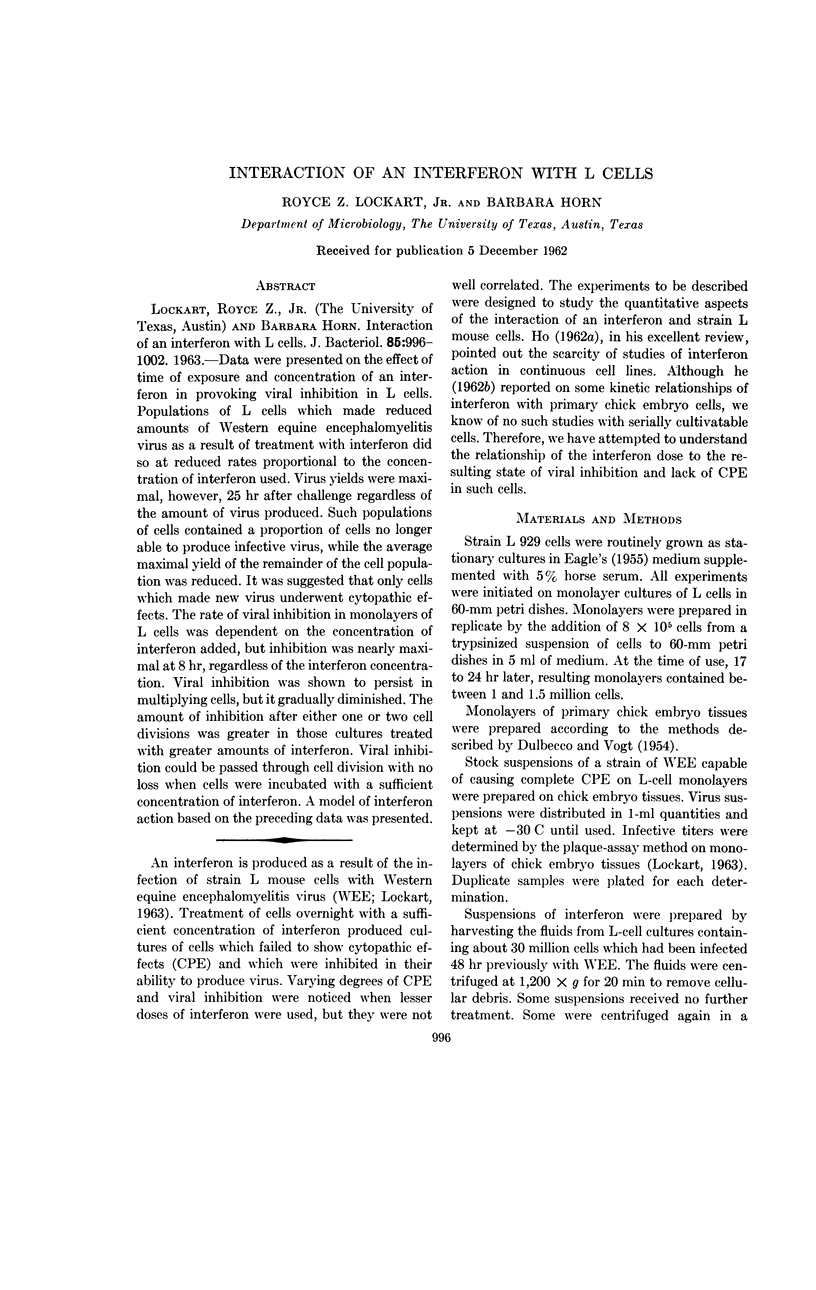
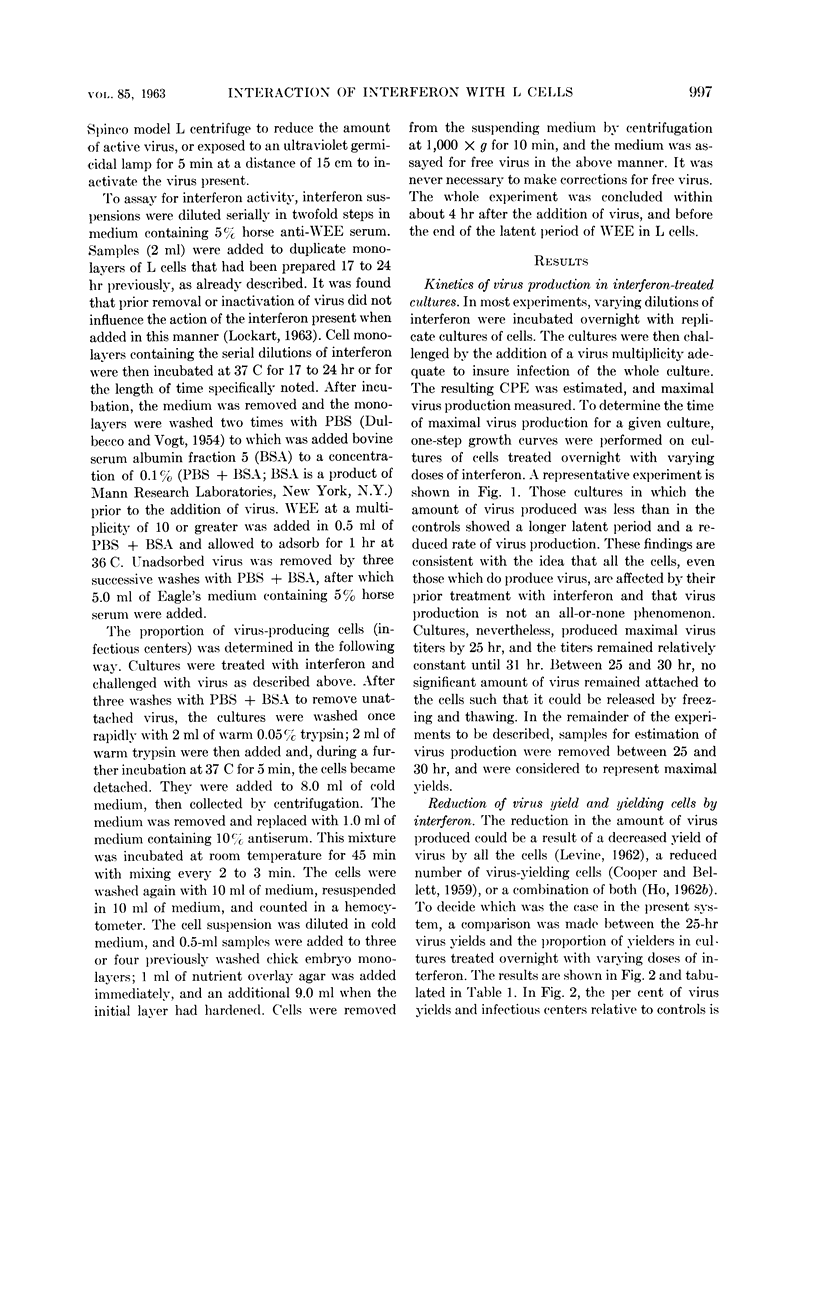
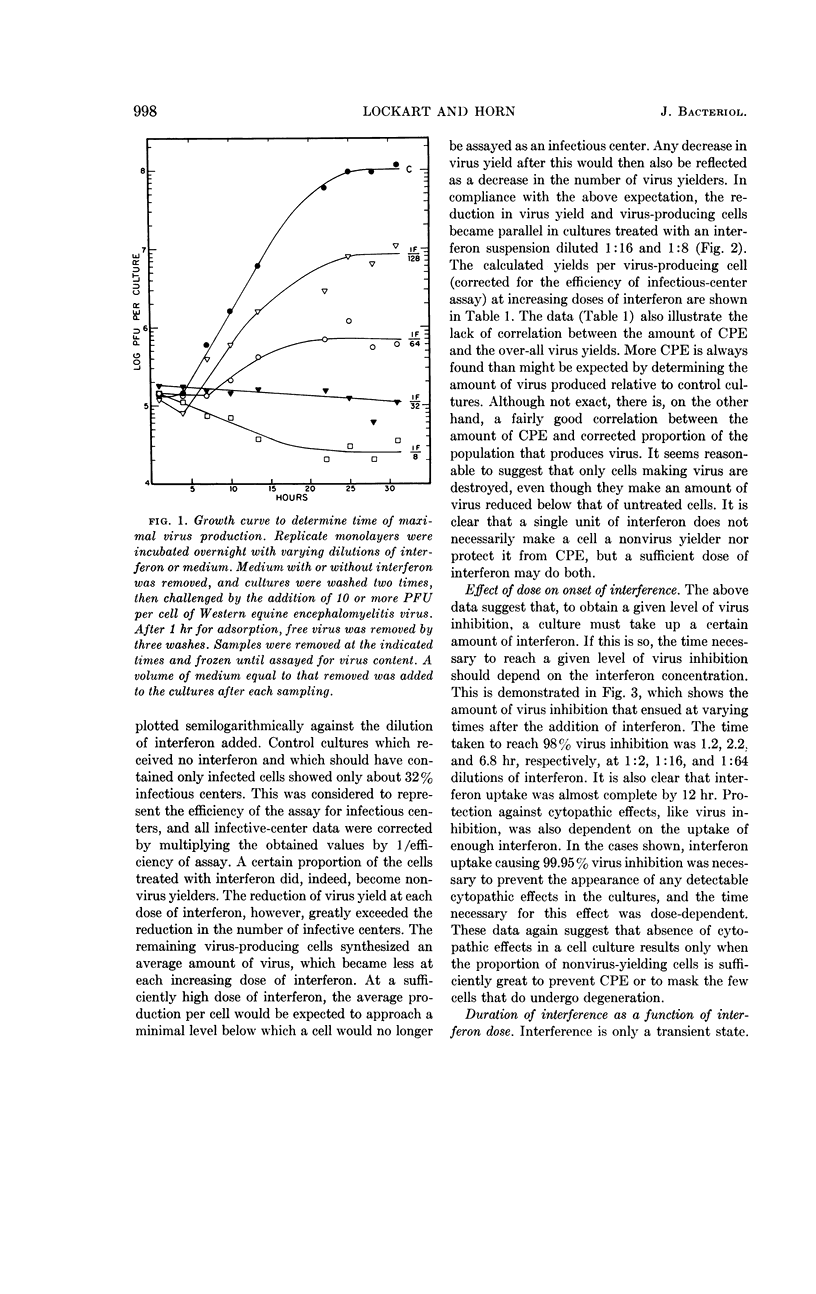
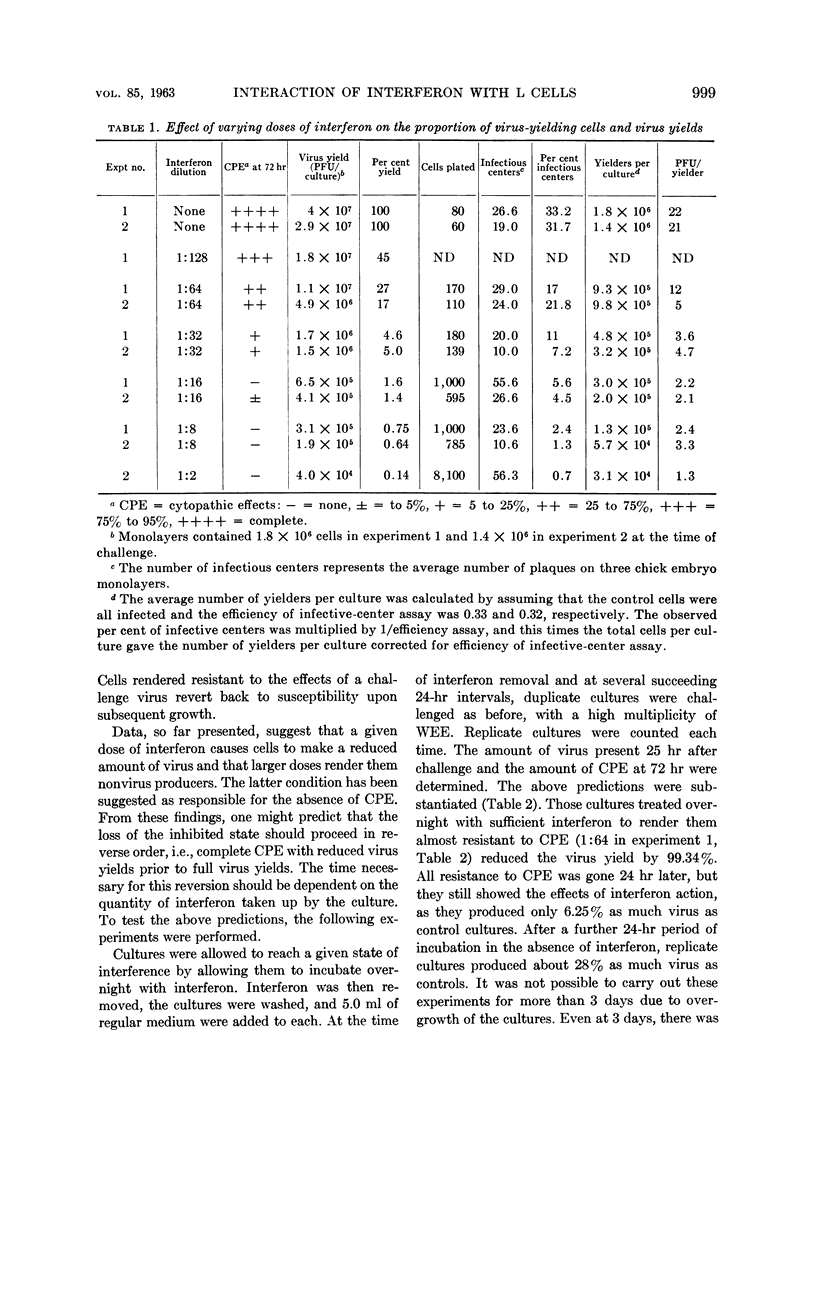
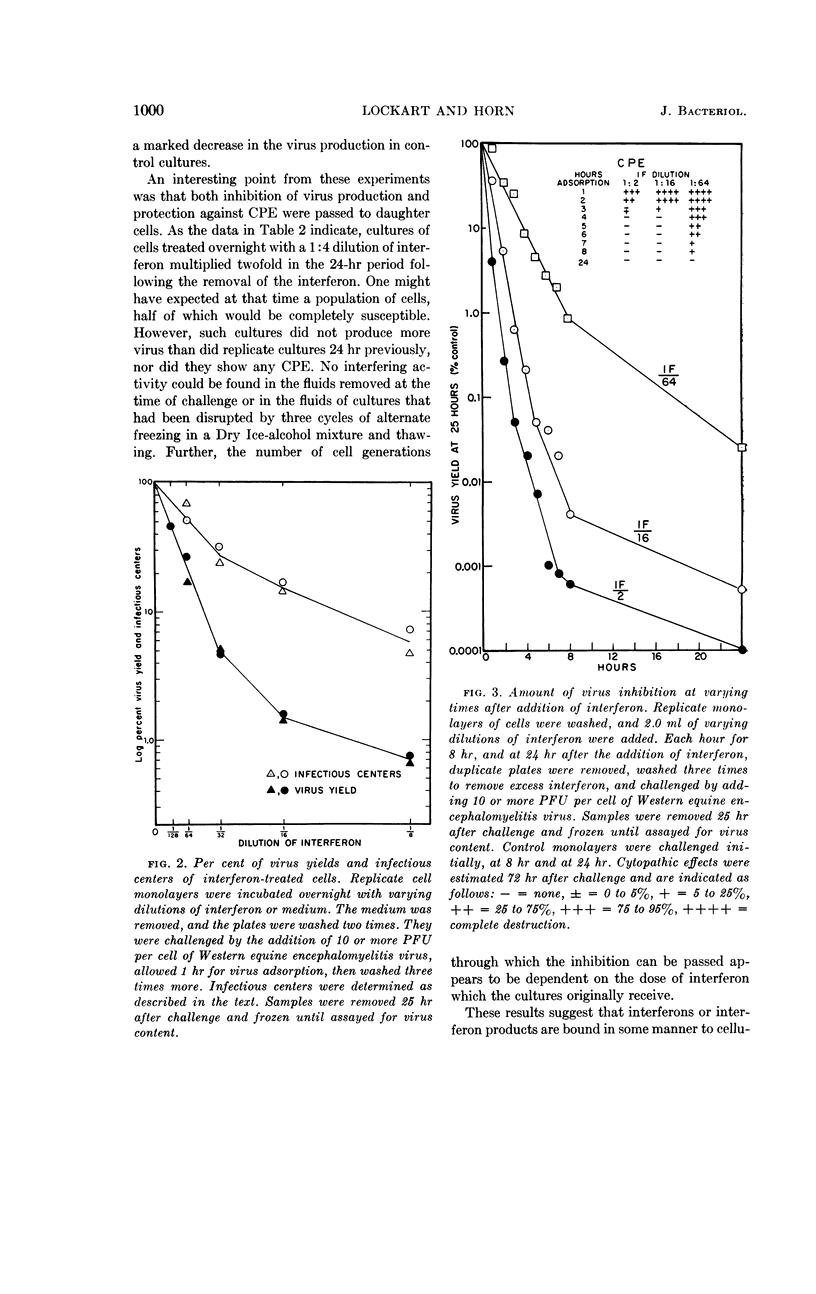
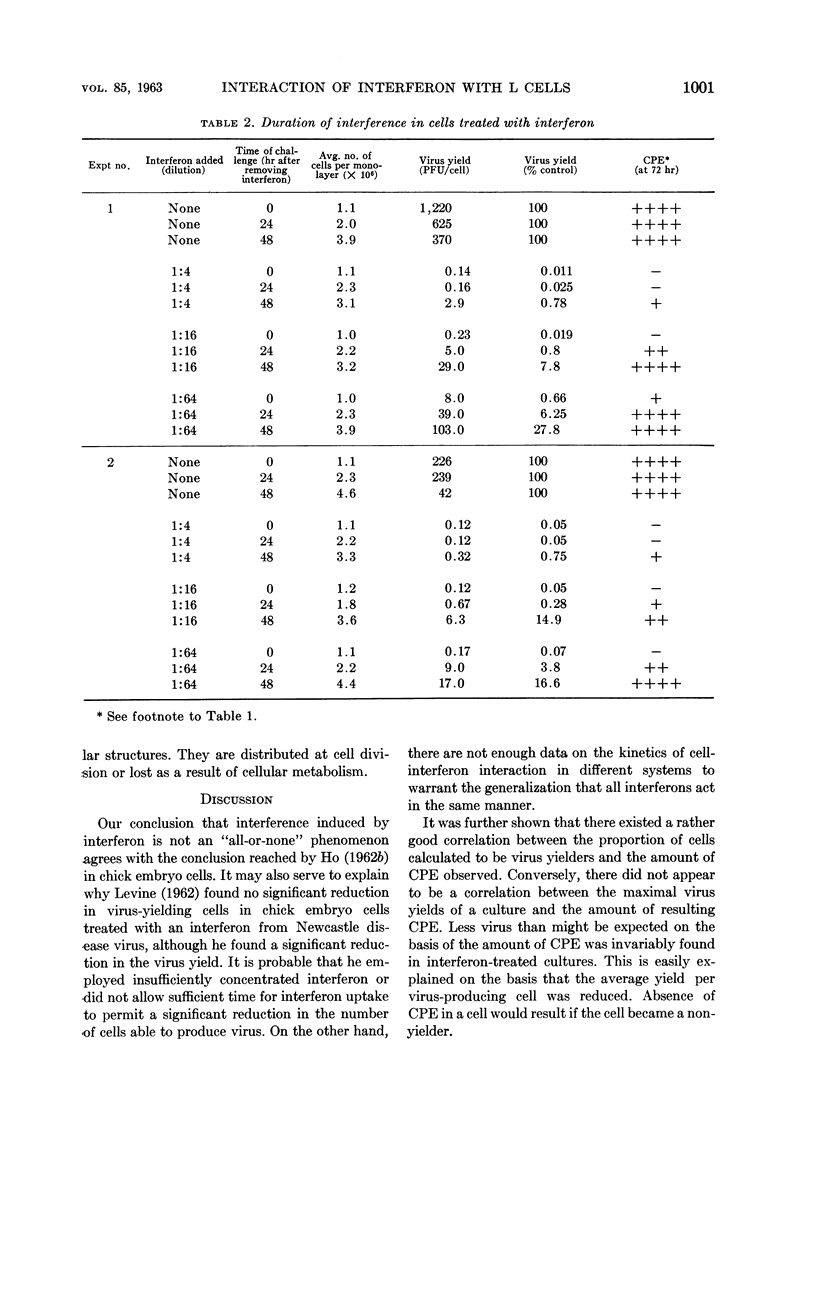
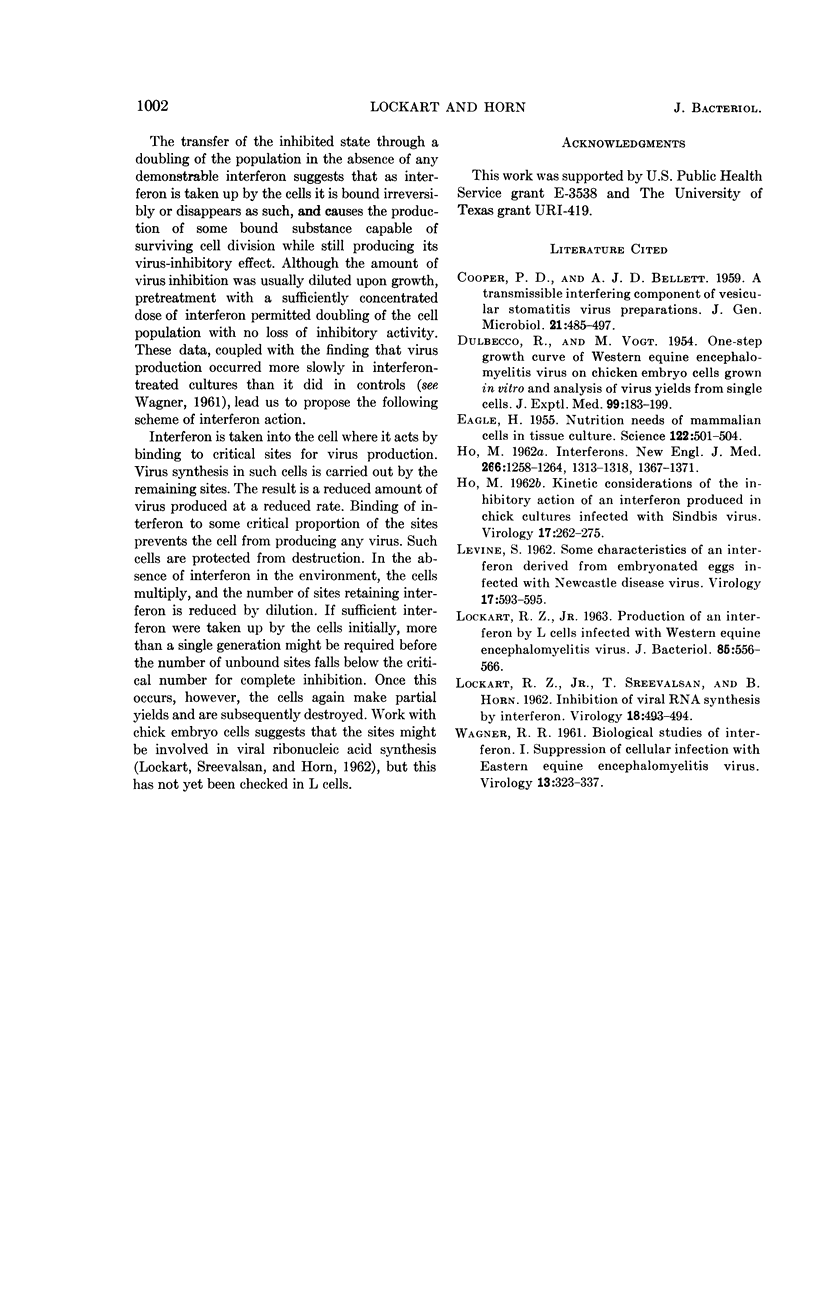
Selected References
These references are in PubMed. This may not be the complete list of references from this article.
- COOPER P. D., BELLETT A. J. A transmissible interfering component of vesicular stomatitis virus preparations. J Gen Microbiol. 1959 Dec;21:485–497. doi: 10.1099/00221287-21-3-485. [DOI] [PubMed] [Google Scholar]
- DULBECCO R., VOGT M. One-step growth curve of Western equine encephalomyelitis virus on chicken embryo cells grown in vitro and analysis of virus yields from single cells. J Exp Med. 1954 Feb;99(2):183–199. doi: 10.1084/jem.99.2.183. [DOI] [PMC free article] [PubMed] [Google Scholar]
- EAGLE H. Nutrition needs of mammalian cells in tissue culture. Science. 1955 Sep 16;122(3168):501–514. doi: 10.1126/science.122.3168.501. [DOI] [PubMed] [Google Scholar]
- HO M. Interferons. N Engl J Med. 1962 Jun 21;266:1313–contd. doi: 10.1056/NEJM196206212662506. [DOI] [PubMed] [Google Scholar]
- HO M. Kinetic considerations of the inhibitory action of an interferon produced in chick cultures infected with Sindbis virus. Virology. 1962 Jun;17:262–275. doi: 10.1016/0042-6822(62)90116-2. [DOI] [PubMed] [Google Scholar]
- LEVINE S. Some characteristics of an interferon derived from embryonated eggs infected with Newcastle disease virus. Virology. 1962 Aug;17:593–595. doi: 10.1016/0042-6822(62)90161-7. [DOI] [PubMed] [Google Scholar]
- LOCKART R. Z., Jr PRODUCTION OF AN INTERFERON BY L CELLS INFECTED WITH WESTERN EQUINE ENCEPHALOMYELITIS VIRUS. J Bacteriol. 1963 Mar;85:556–566. doi: 10.1128/jb.85.3.556-566.1963. [DOI] [PMC free article] [PubMed] [Google Scholar]
- LOCKART R. Z., Jr, SREEVALSAN T., HORN B. Inhibition of viral RNA synthesis by interferon. Virology. 1962 Nov;18:493–494. doi: 10.1016/0042-6822(62)90042-9. [DOI] [PubMed] [Google Scholar]
- WAGNER R. R. Biological studies of interferon. I. Suppression of cellular infection with eastern equine encephalomyelitis virus. Virology. 1961 Mar;13:323–337. doi: 10.1016/0042-6822(61)90152-0. [DOI] [PubMed] [Google Scholar]


